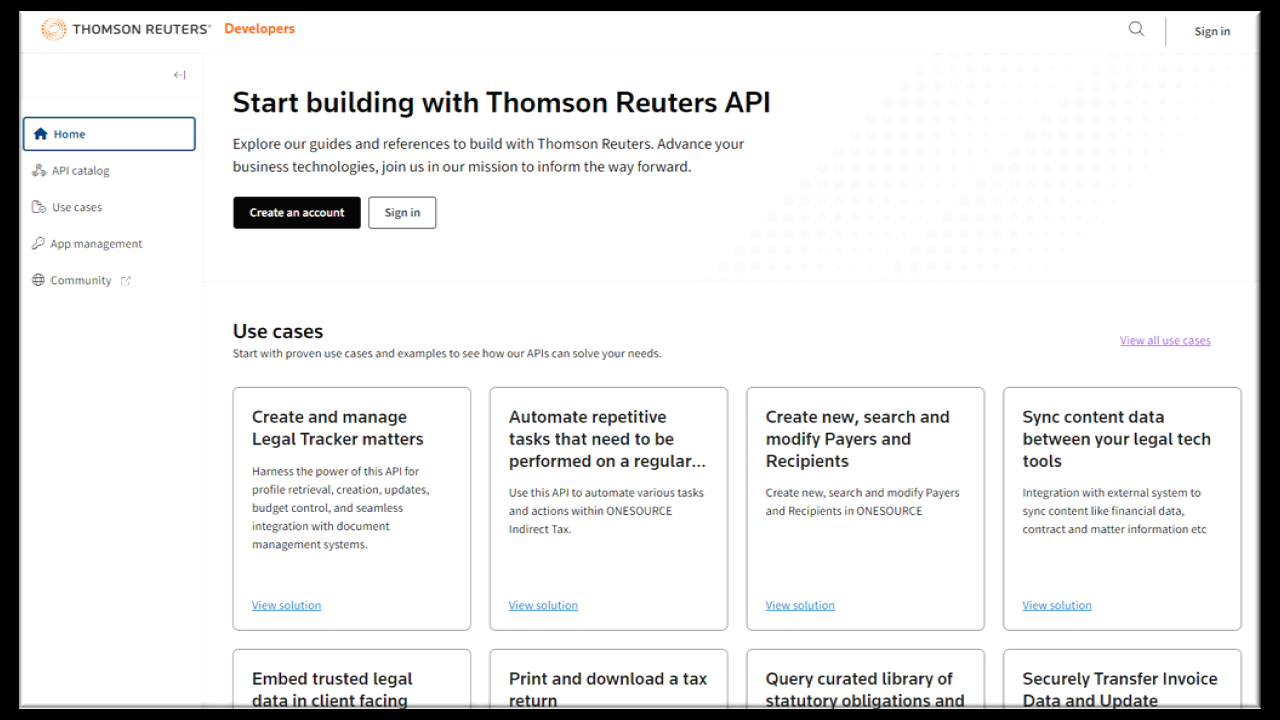Thomson Reuters has launched a global Developer Portal giving access to over 100 APIs, providing tax, legal, risk and fraud professionals with tools to more easily integrate their workflows with the company’s technology, data, content and insights.
TR says that, by providing developers with API access to its data and insights, the portal should serve as a catalyst for innovation among lawyers and other professionals.
The portal provides access to a range of resources, including content from Checkpoint and Westlaw, as well as the technology behind the ONESOURCE tax software and Thomson Reuters AI capabilities. Other APIs, such as Checkpoint Search and Westlaw U.S. Litigation Analytics, provide access to market-leading analytics and content.
“Our new Developer Portal represents a fundamental shift in how we empower our customers and partners,” said Kirat Sekhon, head of engineering at Thomson Reuters. “By opening our ecosystem to developers, we are fostering a culture of collaboration and innovation that will drive meaningful change in the professional industry.”
The portal currently contains 137 APIs spanning four industries: legal, risk and fraud, tax and accounting, and trade and supply. Users can search for APIs by industry, product (such as HighQ, Legal Tracker, or Westlaw), or capability (such as workflow efficiency, data manipulation, or data management).
The portal also organizes APIs by use case. For example, for legal, some of the use cases are:
- Create and manage Legal Tracker matters.
- Sync documents between HighQ and an external document management system.
- Embed trusted legal data in your business intelligence dashboard.
- Embed trusted legal data in experience-management projects, reports, and workflows.
TR also hosts a developer community where developers can collaborate, share insights, and explore options for using TR’s APIs.
In 2022, TR competitor LexisNexis launched its API Developer Portal, which, it said at the time, enabled law firms to access some 99% of LexisNexis content – both raw content and metadata – to incorporate it into their own workflows and applications and combine it with their own internal and third-party data.
 Robert Ambrogi Blog
Robert Ambrogi Blog